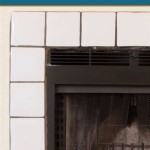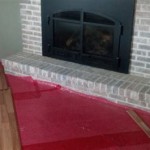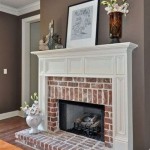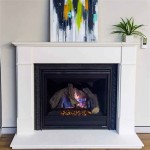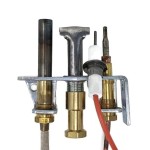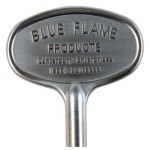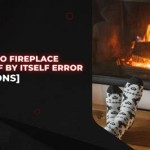Can I Close The Damper On A Gas Fireplace? Understanding Damper Operation and Safety
The question of whether or not to close the damper on a gas fireplace is a common one, and the answer is nuanced and depends heavily on the type of gas fireplace in question. While traditional wood-burning fireplaces require an open damper to vent smoke and combustion byproducts, gas fireplaces have different requirements, and closing the damper at the wrong time can lead to serious safety hazards or damage to the appliance.
Understanding the purpose of a damper, the different types of gas fireplaces, and their specific venting needs is crucial for operating a gas fireplace safely and efficiently. This article will explore these aspects, offering a comprehensive guide to damper operation and the potential consequences of incorrect usage.
Understanding the Damper's Role
The damper is a metal plate located within the flue of a fireplace. In traditional wood-burning fireplaces, its primary function is to control airflow. When open, the damper allows smoke and gases produced by burning wood to escape up the chimney. When closed, it prevents drafts from entering the home when the fireplace is not in use, thereby helping to conserve energy and reduce heating costs.
However, the role of the damper in a gas fireplace is significantly different. Modern gas fireplaces are designed with specific venting systems that may or may not utilize a traditional chimney and damper. The design of these venting systems dictates whether the damper should be open, closed, or even if a damper is present at all.
Types of Gas Fireplaces and Their Venting Requirements
Gas fireplaces are categorized into several types based on their venting systems. These categories include vented gas fireplaces, vent-free gas fireplaces, and direct vent gas fireplaces. Each type interacts with the damper, or lack thereof, in a distinct manner.
Vented Gas Fireplaces: These fireplaces are designed to resemble traditional wood-burning fireplaces and utilize a chimney to vent combustion byproducts. Older vented gas fireplaces often use the existing chimney and damper system of a converted wood-burning fireplace.
Vent-Free Gas Fireplaces: As the name suggests, these fireplaces do not require a chimney or venting system. They are designed to burn gas very cleanly, minimizing the production of harmful byproducts such as carbon monoxide. Because they don't use a chimney, they don't have a traditional damper.
Direct Vent Gas Fireplaces: Direct vent fireplaces are sealed combustion systems. They draw air from outside the home for combustion and vent exhaust gases directly back outside through a dedicated vent pipe. This vent pipe runs horizontally or vertically through an exterior wall. They are sealed units and do not use a traditional chimney or damper.
Determining the Correct Damper Position for Your Gas Fireplace
The proper damper position for a gas fireplace depends entirely on the type of fireplace. A general rule of thumb is: if your gas fireplace is designed to vent through a chimney, the damper may need to be at least partially open. However, it's crucial to consult the fireplace's owner's manual and follow its specific instructions. Using the owner's manual is critically important to determine the best and safest method of using your unit.
Vented Gas Fireplaces: For older vented gas fireplaces that rely on a chimney, the damper needs to be left open during operation. This allows the combustion byproducts, including carbon monoxide, to escape safely through the chimney. Partially closing the damper can create a dangerous situation, as it restricts the airflow and can lead to a buildup of carbon monoxide inside the home. When the fireplace is not in use, the damper can be closed to prevent drafts and heat loss. However it is vital to confirm there is no gas smell when the damper will be closed, confirming the pilot light is not active. Some older units may recommend against ever fully closing the damper due to potential pilot light concerns.
Vent-Free Gas Fireplaces: Vent-free gas fireplaces do not have a chimney or damper, there is no damper to manage. They are designed to be operated without any venting, relying on a very efficient combustion process to minimize emissions. Attempting to connect a vent-free fireplace to a chimney or damper system would be incorrect and potentially hazardous.
Direct Vent Gas Fireplaces: Direct vent gas fireplaces have a sealed combustion system and a dedicated vent pipe. They do not utilize a chimney or damper. Trying to use a chimney with a direct vent fireplace would interfere with its designed operation and could create a safety hazard.
Potential Risks of Improper Damper Usage
Closing the damper on a vented gas fireplace while it is in operation can lead to serious and potentially fatal consequences. The primary risk is carbon monoxide poisoning. Carbon monoxide (CO) is a colorless, odorless gas produced by the incomplete combustion of fuels, including natural gas and propane. When the damper is closed, CO cannot escape through the chimney and can build up inside the home.
Carbon monoxide poisoning symptoms can range from mild, such as headaches, dizziness, and nausea, to severe, including loss of consciousness, brain damage, and death. It is crucial to have working carbon monoxide detectors installed in the home, especially near sleeping areas. Regular maintenance and testing of these detectors can provide early warning of CO buildup.
Additionally, closing the damper on a vented gas fireplace can lead to damage to the appliance itself. The buildup of heat and combustion byproducts can cause the fireplace components to overheat, potentially leading to cracks, warping, or other forms of damage. This can result in costly repairs and reduce the lifespan of the fireplace.
Improper damper usage can also create a fire hazard. The buildup of combustible gases inside the firebox can ignite unexpectedly, potentially causing a fire that spreads beyond the fireplace. Ensuring proper ventilation is crucial to prevent this type of scenario.
Factors to Consider When Operating a Gas Fireplace
Several factors should be considered when operating a gas fireplace to ensure safety and efficiency. These factors include regular maintenance, proper ventilation, and the presence of safety devices such as carbon monoxide detectors.
Regular maintenance is essential for all types of gas fireplaces. This includes inspecting the burner, pilot light, and venting system for any signs of damage or malfunction. The fireplace should be cleaned regularly to remove any soot, dust, or debris that could interfere with its proper operation. A qualified technician should perform a professional inspection and cleaning at least once a year.
Proper ventilation is crucial for vented gas fireplaces. Ensuring that the damper is in the correct position during operation is essential for preventing carbon monoxide buildup. The area around the fireplace should be kept clear of obstructions, such as furniture or drapes, to allow for adequate airflow.
Carbon monoxide detectors should be installed in the home to provide early warning of CO buildup. These detectors should be tested regularly and replaced as needed. The batteries should be checked frequently to ensure they are functioning correctly. It is equally important to understand CO detector types and their placement in the home.
Addressing Specific Scenarios and Troubleshooting
Specific scenarios may arise that require troubleshooting or further clarification regarding damper operation. For example, if a gas fireplace is newly installed or converted from a wood-burning fireplace, it is crucial to verify the correct damper position with a qualified technician.
If there is a noticeable odor of gas when the fireplace is not in use, it could indicate a gas leak or a problem with the pilot light. In this case, the gas supply should be shut off immediately, and a qualified technician should be called to inspect and repair the fireplace. It is dangerous to attempt to operate a gas fireplace if there is a suspected gas leak.
If the fireplace is not producing adequate heat, it could be due to a variety of factors, including a dirty burner, a malfunctioning gas valve, or improper damper position. Troubleshooting these issues typically requires the expertise of a qualified technician. Attempting to repair the fireplace without proper knowledge and experience can be dangerous.
In situations where the owner's manual is lost or unavailable, it may be possible to obtain a replacement from the manufacturer's website or by contacting customer service. The owner's manual provides essential information on the safe and proper operation of the fireplace, including damper position, maintenance procedures, and troubleshooting tips. The model number and brand of the unit are critical to locating the correct manual.
When to Seek Professional Assistance
While some basic maintenance tasks can be performed by homeowners, it is essential to know when to seek professional assistance. Gas fireplaces involve flammable fuels and potential combustion hazards, making it crucial to enlist the help of qualified technicians for complex repairs or inspections.
Any issues related to gas leaks, carbon monoxide detection, or malfunctioning burners should be addressed by a trained professional. Attempting to fix these problems without proper knowledge and equipment can be dangerous and may void the fireplace's warranty. A qualified technician will have the necessary tools and expertise to diagnose and repair these issues safely and effectively.
Annual inspections by a qualified technician are highly recommended to ensure the fireplace is operating safely and efficiently. These inspections can identify potential problems before they escalate into more serious issues. They also provide an opportunity to address any questions or concerns regarding the operation and maintenance of the fireplace. A CO test performed by a professional is a valuable safety measure.
Furthermore, if any unusual noises, smells, or smoke are noticed during fireplace operation, it is crucial to shut off the fireplace immediately and contact a qualified technician. These symptoms could indicate a serious problem that requires prompt attention.

When To Close My Fireplace Damper We Love Fire

How To Close A Fireplace For Spring Doctor Flue Mi Oh

When Should You Close The Damper On A Fireplace Tips

How To Stop Fireplace Drafts Full Service Chimney

How Do Fireplace Dampers Work Zoro Com

What S The Purpose Of A Chimney Damper Where Is It Located

When To Close My Fireplace Damper We Love Fire

Chimney Damper Repair Top End St Louis Mo English Sweep Inc

Vented Vs B Vent Direct Free Dixie S

What Is A Chimney Damper Full Service
Related Posts

